Several years ago, I encouraged blog readers to plant trees for the well-being of our planet. If you followed my advice, you have some shade to sit in while enjoying your beverage of choice!
Now in the midst of the worst drought Southern California has experienced in our lifetime, the most important thing you can do now is to use the precious water available to keep our trees thriving.
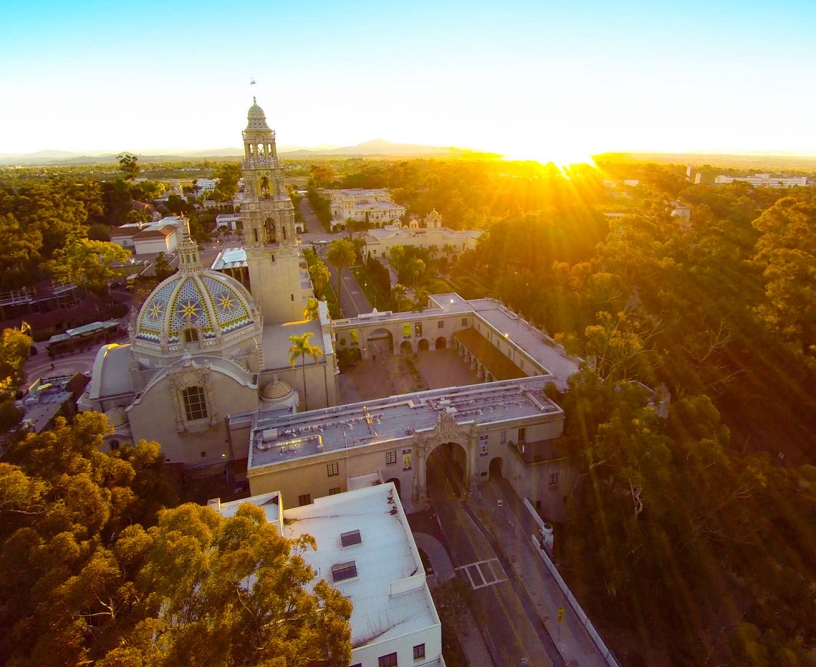
San Diego’s trees add to the beauty it is known for worldwide. Photo: City of San Diego
Put trees first in line for water
Southern California officials are issuing new restrictions on outdoor water use amid the worsening drought. It’s fine for lawns to go brown – and it’s even better if we replace them. But we must keep trees alive and healthy. It’s OK to water them responsibly. Even the San Diego County Water Authority encourages residents to water their trees.
🌳 Take Care of Trees During Drought. Water deeply. Irrigate mature trees 1 foot deep once or twice a month during the summer. #cadrought #treecare pic.twitter.com/mRXtDBBqin
— San Diego County Water Authority (@sdcwa) June 3, 2022
Trees are the most powerful weapon to fight against global warming and climate change. We know trees clean the air by filtering pollutants and producing oxygen. Trees also reduce energy costs by providing shade and cooling the air, offsetting the scorching heat coming from streets, concrete, and buildings. (the “urban heat island effect”). California street trees save the amount of electricity it would take to air condition 530,000 households every year.
Planting billions of trees is one of the most efficient and cost-effective ways of removing carbon dioxide from the atmosphere. As trees grow, they absorb and store the carbon dioxide emissions driving global heating. New research show we could remove just under one-third of all the emissions from human activities remaining in the atmosphere today if we began a worldwide tree planting initiative. There is no other technology currently that can do this.
According to Professor Tom Crowther at the Swiss university ETH Zürich, it is overwhelmingly more powerful than all other climate change solutions proposed. Tree planting is “a climate change solution that doesn’t require scientists to come up with technological solutions to draw carbon dioxide out of the atmosphere. It is available now, it is the cheapest one possible and every one of us can get involved.”
We can make changes by growing trees, donating to forest restoration programs, and encouraging officials to include tree planting in government budgets.
Trees are disappearing too fast in San Diego and across California
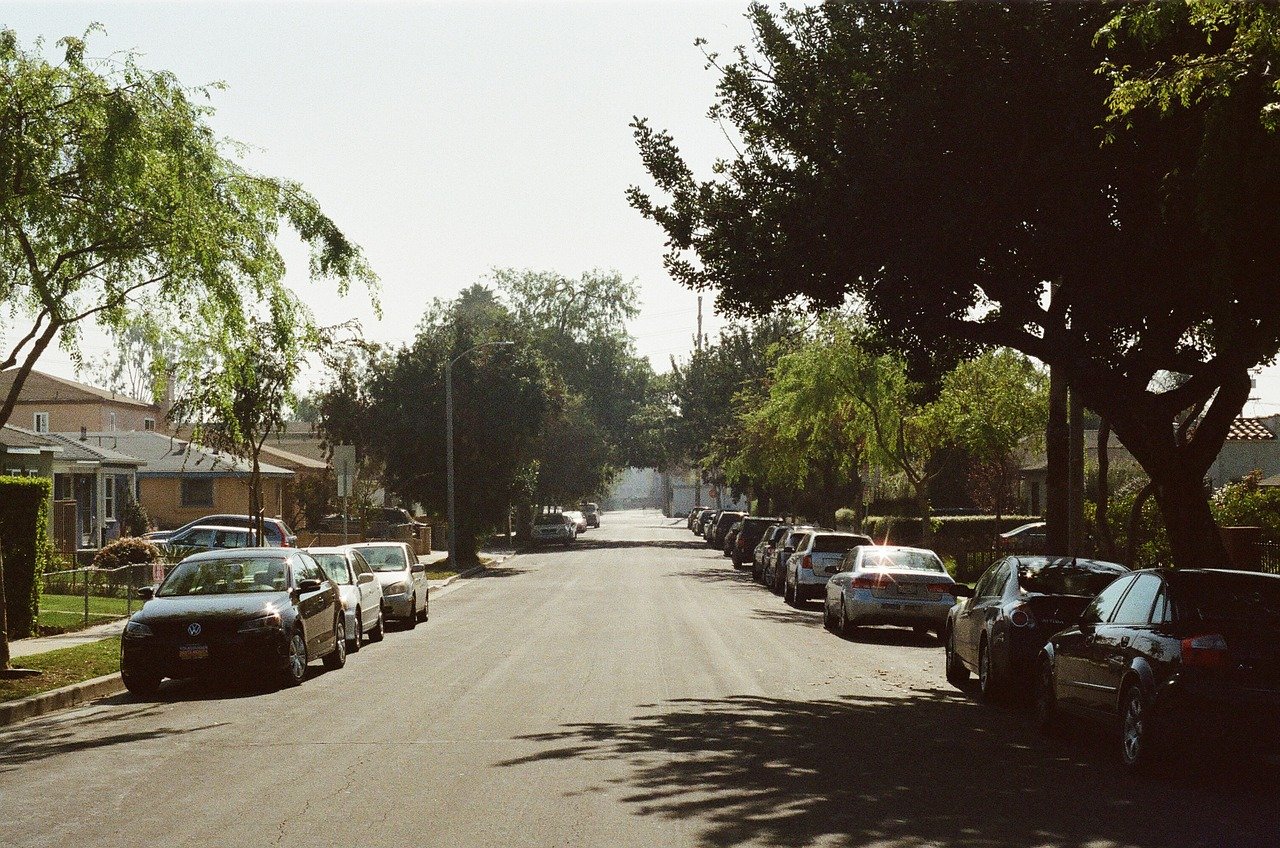
Imagine how bleak and hot this neighborhood would be without the mature street trees. Photo: Jay Mandri/Pixabay
All over the state, our urban and suburban street trees are being removed due to drought, disease, and because they’ve become street hazards raising sidewalks. There are 16 million empty spots waiting for replacement street trees in the state. Caltrans has also cut a lot of trees down, replacing them with low profile, low water use landscaping. It’s better than nothing – but not as good as trees.
Tree watering is your top garden priority
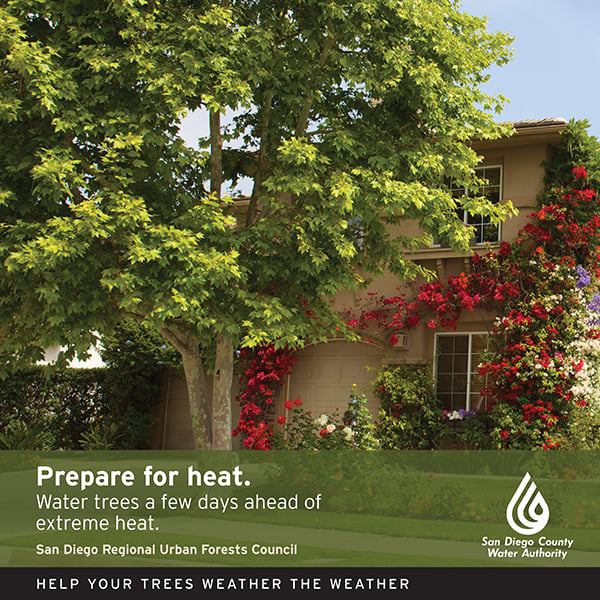
By far the best use of water in your landscaping at home is for your trees, especially trees you may have planted in the past year. Newly planted trees don’t have deep, developed root systems. So they need the most water to survive, especially in the first few weeks.
Our blog post on watering trees in a way that mimics Nature is in our top ten all-time blog posts. We encourage you to read the whole column and refer to it. The top tips are below for the TL; DR crowd.
More established trees don’t need daily watering. They can get by with surprisingly little water, especially if you planted native trees. They have developed over thousands of years to survive on our small amounts of natural rainfall.
Weekly watering will easily support any healthy, mature trees through the summer. Younger trees – with a trunk diameter of two to three inches or less need more water.
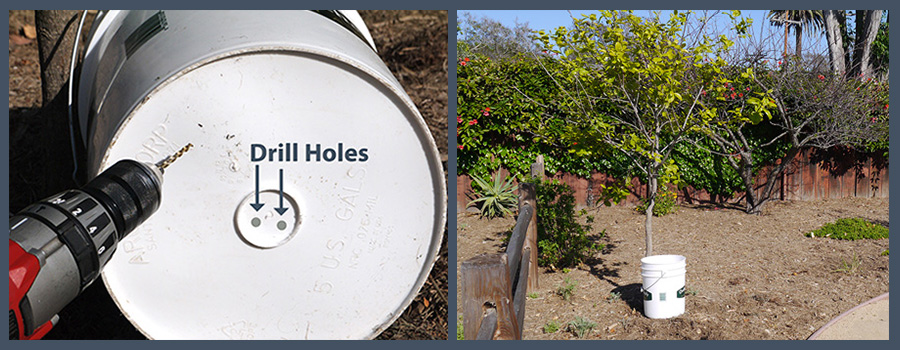
Using a bucket as a drip irrigation system works well with trees. Be sure to cover the bucket to prevent accidents with children. Photo: Courtesy Goleta Water District
The best way to water landscape trees is as slowly as possible. You can use small soakers or bubblers placed near the tree running on the lowest setting.
The critical watering zone is a distance out about two-thirds of the height of the tree. A 12-foot-tall tree should be watered within nine feet of the trunk.
You can also use the “bucket method,” described in the blog post – read about it here. It works great and it gets the most out of every drop of water.
Water directly into the soil. Don’t spray water on the leaves. Tree roots are the way trees absorb water. Watering tree leaves wastes water.
If you want to plant additional trees, wait until the hottest summer and early fall weather is over, with the best chance for rain.
Trees are worth a lot more than a little shade
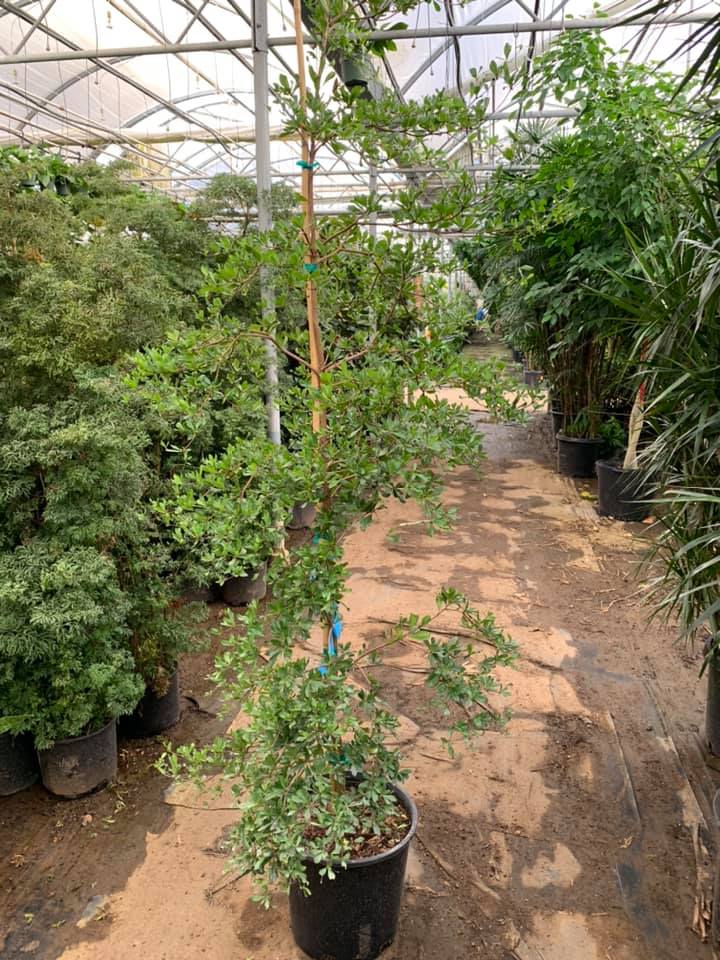
Black olive trees grown by our friends at Olive Hill Greenhouses in Fallbrook. Photo: Jim Mumford
During the rare bits of rainfall we get in San Diego, trees provide runoff mitigation. They soak up rainwater and store it in their biomass instead of letting it wash down storm drains. The water takes oil, anti-freeze, pesticides, cigarette butts, and plenty of other chemicals and trash with it, all ending up in the Pacific Ocean. Yuck.
If we lose trees to disease, drought, or removal and don’t replace them, it reduces habitat for wild animals. Birds that are migrating through or other animals that rely on trees for shelter and food will not have those trees anymore.
Trees increase property values in entire neighborhoods, sometimes by tens of thousands of dollars. Who doesn’t love a tree-lined street? Trees have also been shown in studies to calm down street violence. Conversely, it’s no coincidence many lower-income neighborhoods lack street trees and trees on private property in general.
The city of San Diego needs to plant 150,000 new trees to meet its short-term goals, and one million trees to meet its ultimate goal. It barely replaces trees lost to disease, drought, or other damages.
San Diego’s urban forestry budget won’t cover the need. As citizens, we need to let our city leaders know this isn’t acceptable.
YOU can help save trees! Here’s how!
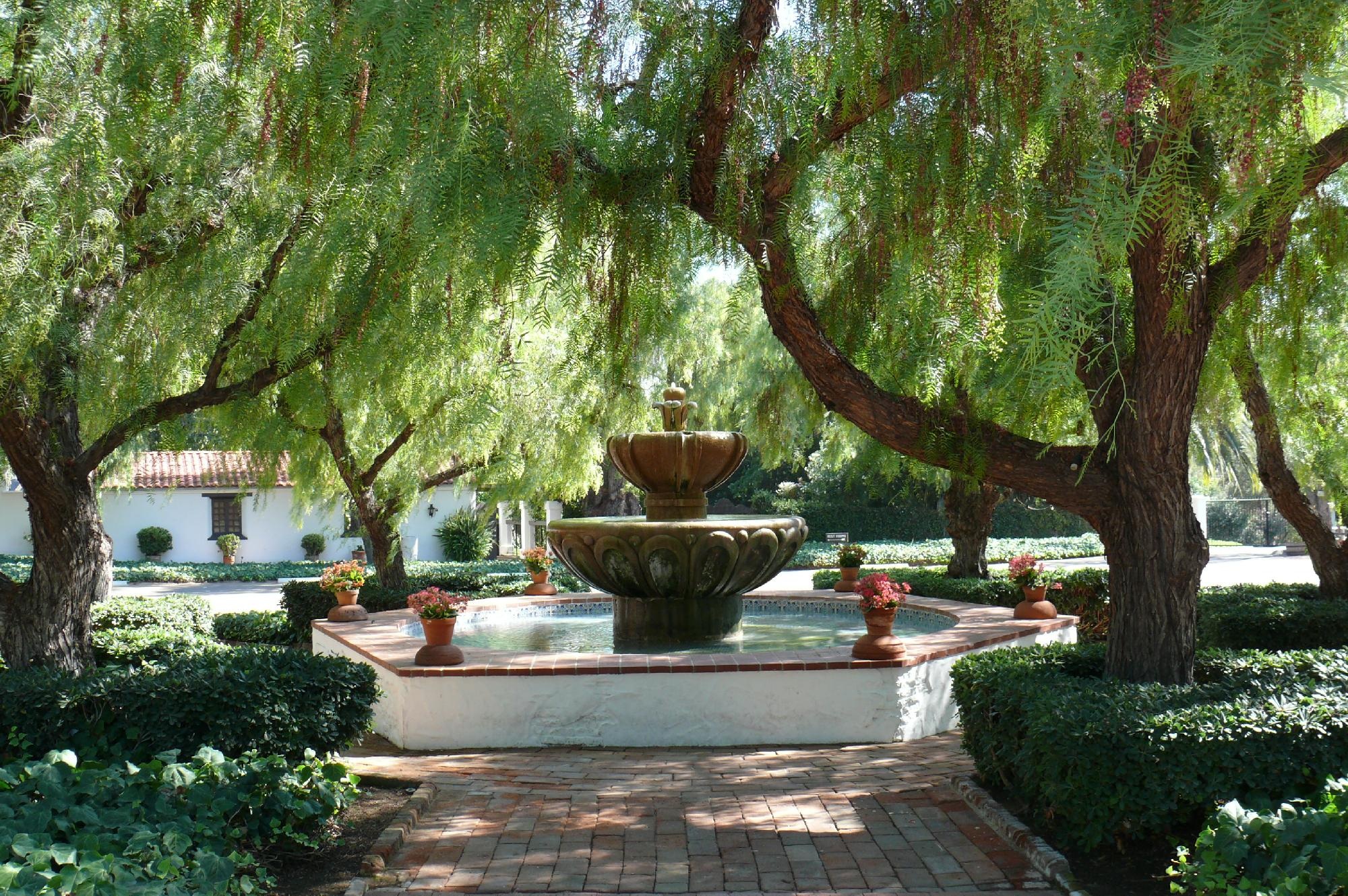
When trees are lost, it takes decades to restore them to their previous mature size. Photo: Pixabay
Along with planting your own trees, please support the efforts of officials and organizations who advocate for urban forestry. Joining their efforts will help them achieve their goals.
The San Diego Regional Urban Forests Council is a great place to start. It is made up of agencies, businesses, and educators working to improve our urban forest assets. Its website is full of great information. Follow their social media channels too. Tree San Diego is a second nonprofit focused on the City of San Diego’s trees.
California ReLeaf is a statewide organization also working to increase our urban forests.
And don’t forget our friends at The Water Conservation Garden, a nonprofit well worth your support.
Ask your elected officials to fully fund the City of San Diego’s Urban Forestry Program, for any or all of the reasons here. You can send a link to this blog post if it helps!
Applause for the City of Santee AKA “Santree,” which supports planting more trees in its communities. Other cities with urban forestry programs include:
Encinitas and National City are also on board.
Caltrans also manages a lot of trees and often removes them – something I wrote about in this blog post in 2015. Contact your state senator or assembly member and express support for statewide tree cultivation and funding.
Do I seem obsessed with trees? My first original blog post was about treehouses, so maybe it’s true. Someone needs to fight for trees the same way they fight for our planet.
It’s hard to imagine any other way to impact the long-term future much more. Trees last for decades. You can’t say the same about a pothole repair.
